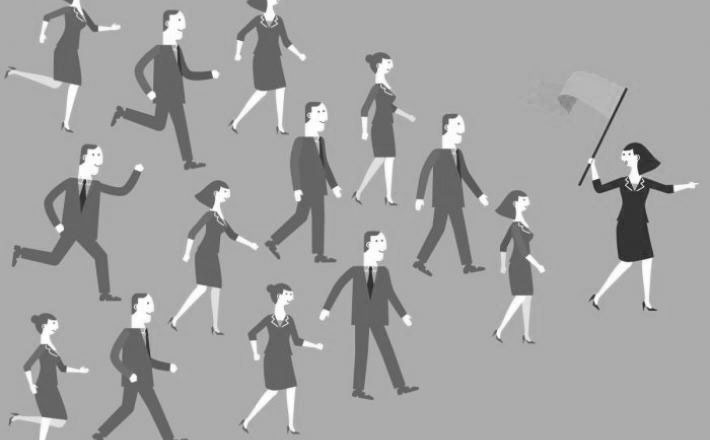Column: Women’s role in politics
by Virginia Johnston
In my third-grade class, each student was given a handout with the question “What would you do if you were President?” The typical answers ensued: no more chores, free candy, and ruling the world. Though these responses are very eight-year-old-ish, what is interesting is that every kid in the class had the opportunity to answer. There was no discrimination. Even I, a female, was given a paper that eventually had the words “I would get rid of homework” scribbled on it.

Since then, my ideas on politics have matured a bit. I have taken social studies and history courses and paid attention to current events. Sadly, I have learned that getting involved in politics for women isn’t as fair as it was in my third-grade classroom. Women have had to endure extreme injustice only to get where we are today.
As I am sure everyone already knows, we have never had a woman president. I want this fact to really sink in. Think about all the women you know in your life, and none of them have had a female president as a role model. Not one. We have been learning about the men in charge since elementary school. And up until relatively recently, only white men.
When discussing feminist issues, intersectionality often gets left in the dust. It is important to recognize that women exist outside of the upper-class white persona that is typically seen at the forefront of the movement. Most people know that women were granted the right to vote in 1920, but we need to realize that that privilege mostly applied to white women and obstacles were still in place for other minorities. The Voting Rights Act that prohibits racial discrimination in voting wasn’t passed until 1965.
Even with the protection of this act, minorities still face problems at the polls. Racism is a current issue, as much as we try to ignore it. Restrictive voting laws single out people of color and actively make the voting process more difficult. There are still people being denied the right to vote. Native Americans continue to this day to fight for citizenship while remaining loyal to their culture. Without that citizenship, they aren’t allowed to vote. In 2000, it was ruled that citizens of U.S. territories aren’t allowed to vote either, even though they pay taxes and serve in the military. For these minorities, and women specifically, the presidency is distant and inaccessible.
Less than a third of our government consists of women, and those who make up that small percentage have to tolerate the added pressure of constantly keeping up appearances. Women in government are slandered and criticized beyond what is standard for men. A female politician must remain poised and perfect. She has to be receptive to new ideas but not a pushover. Her look can seem more important than her policies. There isn’t one woman in politics who hasn’t been called angry or bossy, and this applies regardless of party.
In 2015, Donald Trump criticized former Republican presidential hopeful, Carly Fiorina. “Look at that face! Would anyone vote for that, the face of our next president?” Recently in 2019, former vice president Joe Biden expressed his opinion on Democratic presidential candidate Senator Elizabeth Warren’s campaigning strategy, saying she adopts “an angry unyielding viewpoint that has crept into our politics.” Comments like these are constant for these women. Sure, there are cases of male politicians being criticized for subject matter other than their politics, but it doesn’t affect them the same way.
When women are berated with sexist labels, their “likability” tanks. They are deemed less electable. Meanwhile, their male counterparts get by even with sexual harassment cases against them. A male politician yelling on stage has passion and dedication. A female politician who yells has a temper and it’s probably that time of the month.
In the 2016 presidential election, Hillary Clinton won the popular vote. Regardless of your views or party affiliation, this achievement is monumental for women’s history. At the beginning of this presidential election, a record breaking six women were in the running. These women are paving the path to the future. Even though the playing field is still not quite even, they are pushing through these hardships to prove that women have a chance.
As a young woman who just cast her first ever vote in the primary elections, I am hopeful for the future. No matter the outcome of the 2020 election, I know that a woman president is just around the corner. Soon, third graders will have a female role model to look up to and aspire to be like, especially if she supports free candy and no homework.
Categories: Editorials,